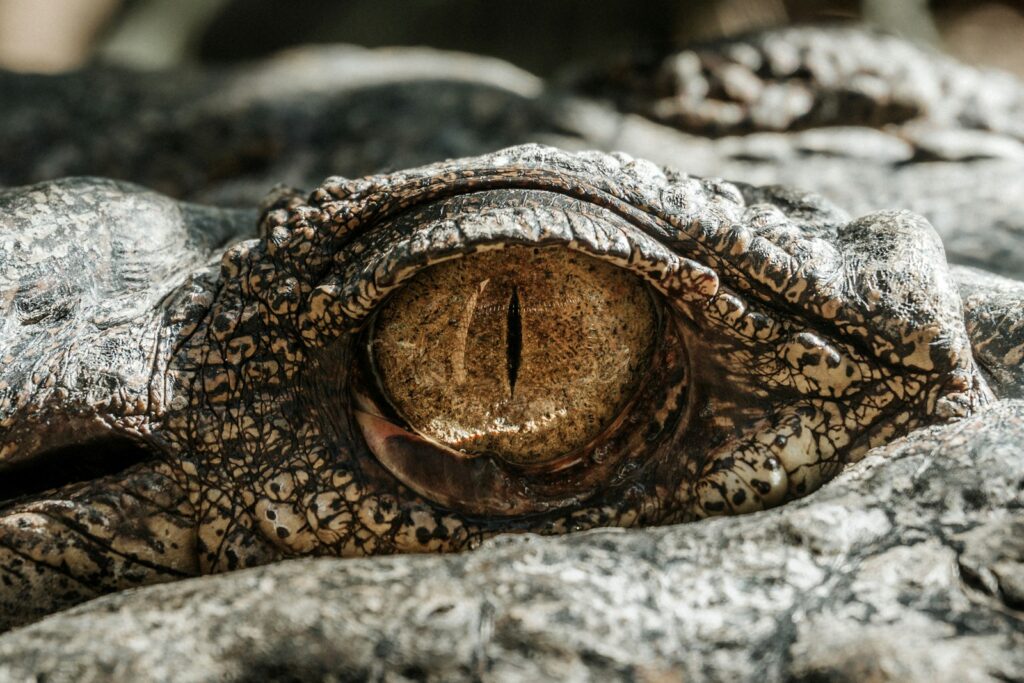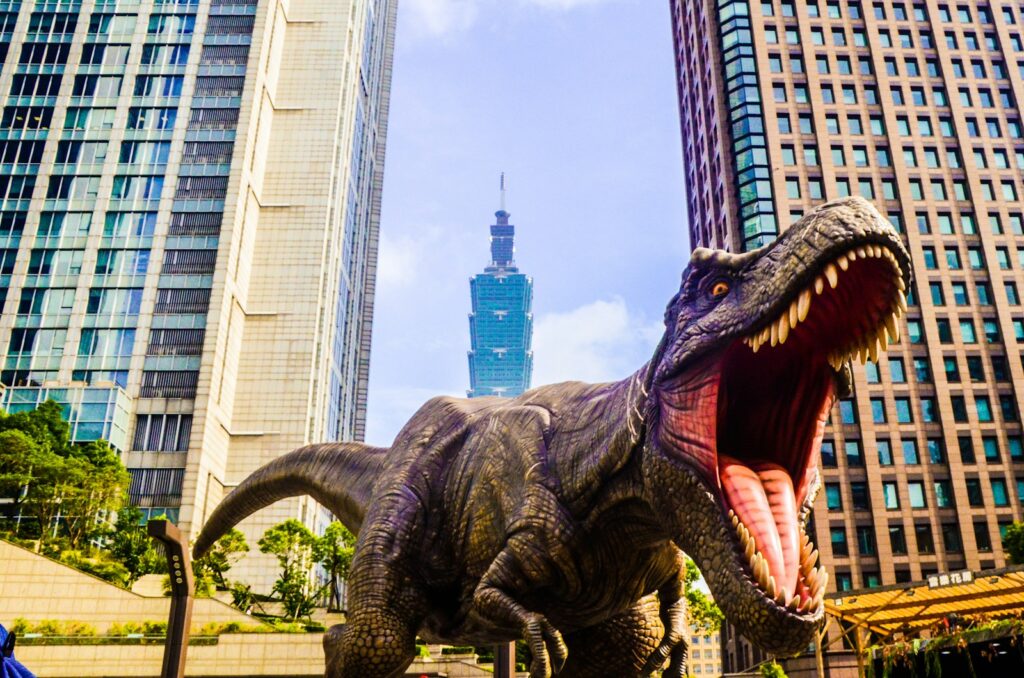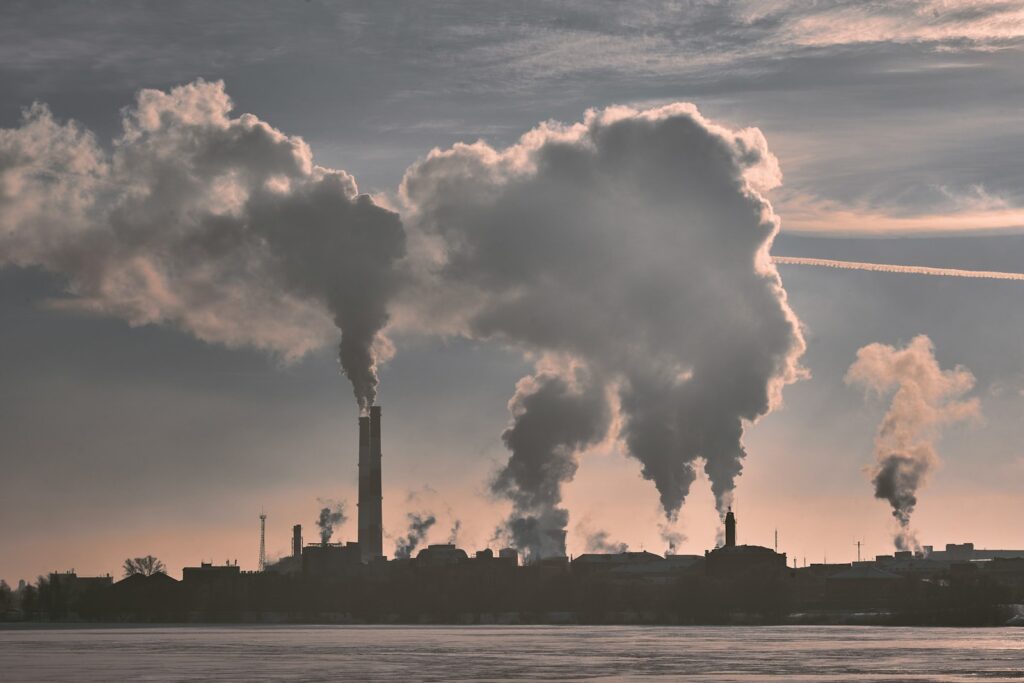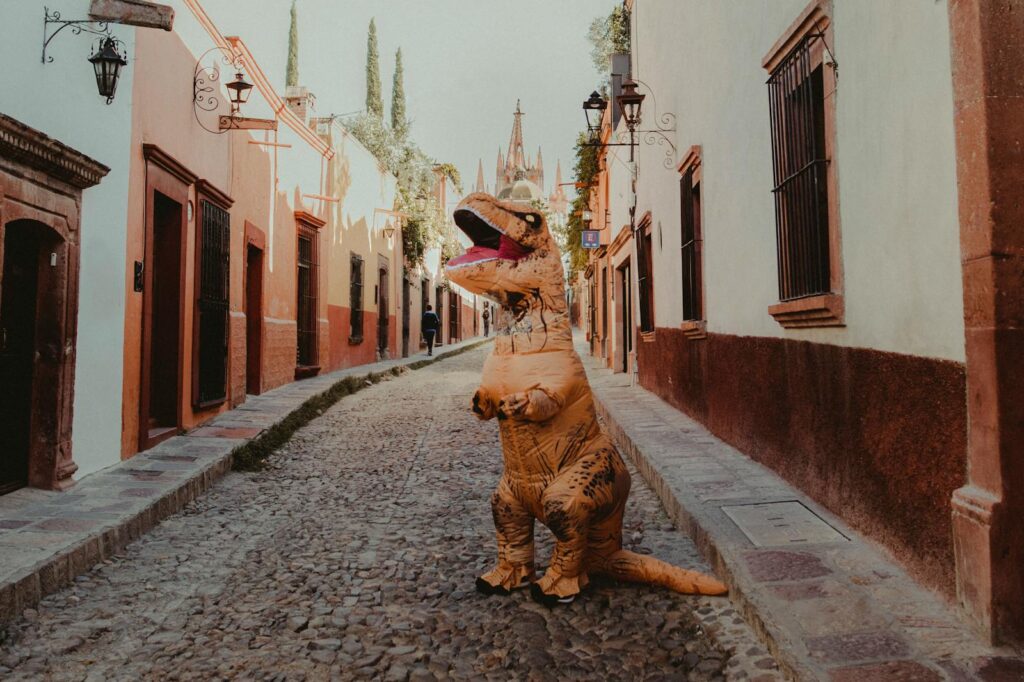The thought of dinosaurs roaming our modern world sparks both wonder and scientific curiosity. These magnificent creatures dominated Earth for approximately 165 million years before their sudden extinction about 66 million years ago. As paleontologists continue to uncover new fossils and information about dinosaur physiology, a fascinating question emerges: could these prehistoric giants survive in today’s climate? This article explores the multifaceted challenges and potential advantages dinosaurs might face if they were somehow reintroduced to our contemporary environment, examining everything from atmospheric composition to competition with modern species.
The Earth’s Atmospheric Changes

Today’s atmosphere differs significantly from the one dinosaurs breathed during the Mesozoic Era. During the dinosaurs’ reign, particularly in the Cretaceous period, oxygen levels were approximately 30% higher than today, while carbon dioxide levels were up to five times greater. This enriched atmosphere supported massive growth in vegetation, providing abundant food for herbivorous dinosaurs, which in turn sustained large predators. Modern dinosaurs would need to adapt to lower oxygen levels, which might affect the enormous sauropods and other large species most dramatically. Their respiratory systems, which some research suggests may have been more bird-like and efficient than previously thought, would be tested in our comparatively oxygen-depleted air. The reduced carbon dioxide would also result in less abundant plant life of the types they evolved to consume.
Temperature and Climate Patterns

The Mesozoic Era was generally warmer and more uniform in temperature than our current world. Dinosaurs evolved during a time without polar ice caps, when tropical or subtropical conditions extended much farther toward the poles. Today’s more varied climate, with its distinct seasons and dramatic temperature differences between regions, would pose adaptation challenges for many dinosaur species. However, not all dinosaurs would struggle equally – evidence suggests some species, particularly smaller theropods and certain ornithischians, lived in cooler, even polar regions during the Mesozoic and developed adaptations like potential warm-bloodedness or insulating structures. These species might have a better chance of adapting to modern temperature variations than the giant tropical species. The increasing temperatures from human-caused climate change might actually create more hospitable conditions for some dinosaur species, though the rate of warming would still pose adaptation challenges.
Metabolic Considerations

One of the most significant determinants of dinosaurs’ potential survival would be their metabolic rates. The traditional view of dinosaurs as cold-blooded reptiles has evolved substantially, with mounting evidence suggesting many dinosaur lineages were mesotherms or even endotherms, possessing metabolic rates somewhere between modern reptiles and birds. Theropod dinosaurs, the lineage that eventually produced birds, likely possessed higher metabolic rates similar to their avian descendants. These species might adapt more readily to today’s environment than the massive sauropods, whose metabolism remains more debated. A higher metabolism would help dinosaurs regulate their body temperature in varied climates but would also require greater food intake. In our modern world with less abundant vegetation of the types they evolved with, this could create a significant survival challenge, particularly for the larger herbivores that needed to consume massive amounts of plant matter daily.
Available Food Sources

The plant life that sustained herbivorous dinosaurs differed dramatically from modern flora. During the Mesozoic, flowering plants (angiosperms) were just beginning to diversify, with conifers, cycads, ginkgoes, and ferns dominating the landscape. Today’s plant world is dominated by angiosperms with different nutritional profiles and defense mechanisms. Herbivorous dinosaurs would face significant challenges adapting their digestive systems to process these modern plants efficiently. Carnivorous dinosaurs might fare somewhat better, as prey animals remain abundant, though they would need to adapt to hunting unfamiliar species. The different nutritional compositions of modern animals might not provide the specific dietary requirements that predatory dinosaurs evolved to need. Additionally, modern plants and animals have evolved alongside their current predators and competitors, developing specific defenses against them, but might lack effective defenses against dinosaurian feeding strategies.
Ecosystem Competition

Today’s ecosystems are filled with highly specialized mammals, birds, and reptiles that have evolved to occupy specific ecological niches. Dinosaurs suddenly introduced into these established ecosystems would face intense competition for resources. Modern predators like big cats, wolves, and bears have perfected hunting strategies for current prey species, while herbivores have evolved specialized digestive systems for processing available vegetation. Although dinosaurs might have size advantages in some cases, they would lack the evolutionary history with modern plants and animals that might give them competitive strategies. Small and medium-sized dinosaur species would likely face the most direct competition with existing animals. Interestingly, the birds – direct descendants of theropod dinosaurs – have already successfully adapted to modern conditions, suggesting that dinosaur physiology had inherent adaptability that might help other dinosaur groups survive if given sufficient time to adapt.
Disease and Immune Challenges

Perhaps one of the most overlooked factors in dinosaur survival would be their vulnerability to modern pathogens. Dinosaurs would have no evolutionary history with current bacteria, viruses, fungi, and parasites, potentially leaving them with little or no immune defense against these microorganisms. Modern animals have co-evolved with their pathogens, developing specific immune responses, but dinosaurs would encounter completely novel disease vectors. The situation might mirror the devastating impact of European diseases on indigenous populations in the Americas during colonization, but potentially more severe. Even common soil bacteria that modern animals handle routinely could prove fatal to dinosaur species with no adaptive immunity. Conversely, dinosaurs might carry ancient microorganisms that modern species have no defense against, potentially causing bidirectional disease transmission problems in a scenario where dinosaurs were reintroduced.
Human Interaction and Habitat Availability

The most dramatic change to Earth since the Mesozoic Era is undoubtedly the dominance of humans and our transformation of the planet’s surface. Approximately 75% of Earth’s ice-free land has been significantly altered by human activity, with natural habitats fragmented or eliminated entirely. Large dinosaur species require vast territories and abundant resources, needs that would bring them into immediate conflict with human populations. Herbivorous giants like Brachiosaurus or Diplodocus would struggle to find sufficient connected habitat to support their enormous dietary requirements. Predatory dinosaurs would likely view humans and livestock as potential prey, creating inevitable conflicts. Unlike the gradually evolving relationship between humans and existing predators like wolves or tigers, which developed over thousands of years, the sudden introduction of dinosaur predators would create unprecedented human-wildlife conflicts with little opportunity for cultural adaptation on either side.
The Existing Dinosaurs: Birds

It’s worth remembering that not all dinosaurs went extinct – birds are the direct descendants of theropod dinosaurs and are technically classified as dinosaurs themselves. Their remarkable success in the modern world provides some insights into dinosaurian adaptability. Birds have survived by evolving smaller body sizes, higher metabolic rates, specialized digestive systems, and sophisticated neurological capabilities. Their ability to fly has allowed them to exploit aerial niches and migrate to favorable conditions when needed. The success of birds suggests that if non-avian dinosaurs had survived the end-Cretaceous extinction event, they too might have evolved significantly different forms to adapt to changing conditions. Some paleontologists speculate that had the asteroid impact not occurred, certain dinosaur lineages might have evolved toward greater intelligence and adaptability, potentially producing species that could have navigated changing climatic conditions more successfully.
Size Limitations in the Modern World

The enormous size of many dinosaur species, while evolutionarily advantageous in the Mesozoic, would present significant challenges in today’s world. Giant sauropods like Argentinosaurus, potentially weighing over 70 tons, required vast quantities of food and uninterrupted territories to sustain themselves. Such requirements are increasingly scarce in our fragmented natural landscapes. Additionally, the lower oxygen content and different plant communities of the modern world might not support the growth of such massive animals. We see this limitation even in modern megafauna – today’s largest land animal, the African elephant, weighs approximately 6 tons, far smaller than the largest dinosaurs. Size reduction might be necessary for dinosaur survival, which we see demonstrated in their avian descendants. Interestingly, some research suggests that certain dinosaur lineages were already trending toward smaller body sizes prior to the extinction event, potentially as an adaptation to changing environmental conditions even then.
Adaptation Potential

The potential for dinosaurs to adapt to modern conditions would vary dramatically by species and would depend significantly on their physiological flexibility. Evidence from the fossil record suggests dinosaurs as a group were remarkably adaptable, surviving multiple climate shifts and evolving diverse lifestyles over their 165-million-year reign. Smaller theropods, particularly those most closely related to birds, likely possessed greater metabolic flexibility and potentially higher intelligence, giving them better adaptation potential. These characteristics might allow them to adjust their behaviors and diets more readily to new conditions. In contrast, highly specialized dinosaurs like the massive sauropods or the heavily armored ankylosaurs might struggle to adapt quickly enough. The rate of adaptation is crucial – gradual climate change over millions of years allows for evolutionary adaptation, but sudden introduction to a completely different world would require immediate behavioral plasticity that some dinosaur species might not possess.
Reproductive Challenges

Dinosaur reproduction in the modern world would face several significant hurdles. Many dinosaur species likely had specific nesting requirements, including particular soil types, temperatures, and environmental conditions to ensure successful egg incubation. Modern habitats might not provide these specific conditions, potentially reducing reproductive success. Additionally, dinosaur young would face predation threats from modern mammals, birds, and reptiles that have evolved efficient strategies for exploiting egg resources. The relatively slow maturation rate of larger dinosaur species would also be disadvantageous in a rapidly changing environment where quicker generational turnover allows for faster adaptation. Species with more precocial young (those born in a more developed state) might fare better than those requiring extended parental care in unfamiliar environments. The need to find suitable mates in potentially fragmented populations would create additional reproductive challenges, particularly for species that may have had complex mating displays or requirements.
Modern Technology and Dinosaur Survival

Human technology would significantly impact dinosaur survival prospects, creating both threats and potential opportunities. On one hand, habitat destruction, pollution, climate change, and direct hunting would pose immediate threats to reintroduced dinosaur populations. Our weapons technology would give humans an overwhelming advantage in any conflict situation, unlike the balanced predator-prey relationships that existed in the Mesozoic. Conversely, conservation technology and protected areas could potentially provide havens for certain dinosaur species. Modern veterinary medicine might help dinosaurs overcome disease challenges, while careful habitat management could create suitable environments for specific species. The public fascination with dinosaurs might motivate stronger conservation efforts than those extended to many existing endangered species. Ultimately, human attitudes and policies would likely determine which, if any, dinosaur species could successfully integrate into modern ecosystems.
A Thought Experiment with Real Applications

While the question of dinosaur survival in the modern world remains hypothetical, this thought experiment has practical applications for understanding extinction, adaptation, and conservation. By examining what would challenge dinosaurs in today’s world, we gain insights into the factors that threaten modern species facing rapid environmental changes. The adaptations that might help dinosaurs survive – behavioral flexibility, dietary adaptability, thermal tolerance, and immune system capabilities – are the same factors that help determine which modern species survive in our changing world. Additionally, understanding the dramatic differences between Mesozoic and modern ecosystems highlights the extraordinary rate of current environmental change. While dinosaurs had millions of years to adapt to gradually changing conditions, today’s species face changes occurring over decades or centuries. This perspective emphasizes the unprecedented nature of human-driven environmental change and the extraordinary challenges it poses to modern biodiversity.
The question of whether dinosaurs could survive in today’s climate ultimately has no simple answer – some species might adapt successfully while others would almost certainly perish. The tremendous diversity of dinosaur species, from tiny microraptor to massive titanosaurs, from polar-adapted species to tropical specialists, means their survival prospects would vary tremendously. What is clear is that the modern world presents a complex mosaic of challenges that would test even these remarkable creatures who dominated Earth for so long. The most adaptable species with flexible diets, moderate size, efficient metabolism, and behavioral plasticity would stand the best chance – characteristics exemplified by the dinosaurs that did survive: birds. Perhaps most importantly, this thought experiment reminds us that no species, no matter how successful or long-lived, is guaranteed survival when environments change too dramatically or too quickly – a sobering lesson as we consider our impact on Earth’s current biodiversity.



